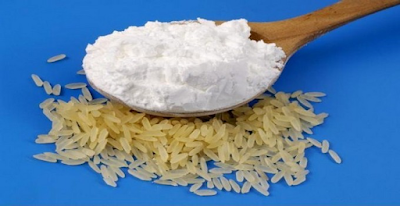How To Make Rice Starch
How to make Rice starch. Rice starch is a type of starch derived from rice grains. It is a fine white powder that is commonly used as a thickening agent in cooking and baking. Rice starch has a neutral taste and is gluten-free, making it suitable for various dietary restrictions.
To obtain rice starch commercially, rice grains are processed to remove the outer husk and bran layers. The remaining inner part of the rice grain, known as the endosperm, is then ground into a fine powder, resulting in rice starch.
Rice starch is known for its excellent thickening properties, especially in applications that require clear or translucent textures. It has a high gelatinization temperature, which means it can withstand heat and maintain its thickening abilities in hot liquids or during baking. This property makes rice starch suitable for use in sauces, gravies, soups, custards, puddings, and other similar recipes.
Additionally, rice starch is often used as a coating or dusting agent to prevent sticking in various food products, such as candies, chocolates, and fried foods. It can also be utilized in the manufacturing of pharmaceuticals, cosmetics, and paper products.
Commercially produced rice starch is readily available in stores, typically in the baking or specialty ingredient section. It is important to note that homemade rice starch may have variations in quality and consistency compared to commercially produced varieties.
When using rice starch as a thickening agent in recipes, it is generally recommended to mix it with a small amount of cold water or another liquid to create a slurry before adding it to the hot mixture. This helps prevent clumping and ensures even distribution throughout the recipe.
Always follow the specific instructions provided in recipes when using rice starch or consult a recipe that specifically calls for rice starch as an ingredient.
How To Make Rice Starch at Home
To make rice starch at home, you can follow these steps:
Materials you'll need:
- Raw rice (preferably long-grain rice)
- Water
- Blender or food processor
- Cheesecloth or fine-mesh strainer
- Large bowl
Here's the process:
- Rinse the rice: Take a cup or two of raw rice and rinse it thoroughly under cold water. This step helps remove any impurities or excess starch from the rice grains.
- Soak the rice: Place the rinsed rice in a bowl and add enough water to cover it completely. Let it soak for about 30 minutes. This soaking process will help soften the rice and make it easier to blend.
- Blend the rice: Drain the soaking water from the rice and transfer it to a blender or food processor. Add fresh water, using a ratio of about 1 part rice to 4 parts water. Blend the mixture until you achieve a smooth consistency.
- Strain the mixture: Place a cheesecloth or fine-mesh strainer over a large bowl. Pour the blended rice mixture into the strainer, allowing the liquid to strain through. Use a spoon or spatula to press down on the mixture gently, helping the liquid pass through the strainer while leaving behind the rice solids.
- Collect the starch: After straining, you will notice a milky liquid collected in the bowl. Let it sit undisturbed for a while, allowing the heavier starch to settle at the bottom while the water separates on top.
- Separate the water: Carefully pour off the water layer, being cautious not to disturb the settled starch at the bottom. You can use a ladle or gently tilt the bowl to facilitate the water separation.
- Dry the starch: Leave the collected starch in the bowl or transfer it to a flat plate or tray. Allow it to air dry naturally. You can place it in a well-ventilated area or near a fan to speed up the drying process. Stir or spread the starch occasionally to ensure even drying.
- Finely powder the starch (optional): Once the starch is completely dry, you can break it into small pieces and grind it into a fine powder using a coffee grinder or a spice grinder. This step is optional, but it can help achieve a smoother texture for certain applications.
- Your homemade rice starch is now ready to use. It can be used as a thickening agent in cooking or as a natural alternative to commercial starches in various recipes. Store it in an airtight container in a cool, dry place for long-term use.
Note: Rice starch may vary in quality and consistency compared to commercially produced starches. It's always a good idea to test the starch in small quantities and adjust the amount used according to your desired results in recipes.







